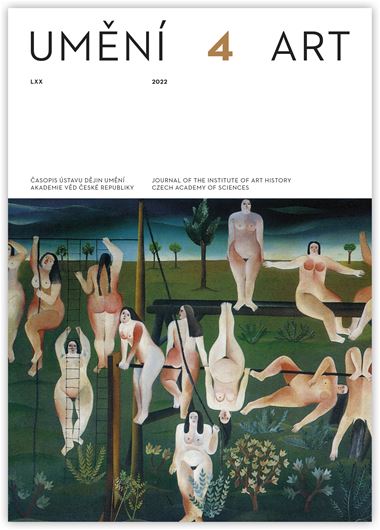Grégoire Extermann — Jana Zapletalová
The Hvězda Summer Palace in Prague, the Villa Trivulzio at Rome, and Giovanni Maria Stella
This article focuses on the author of the stucco decoration of the Hvězda [Star] Summer Palace near Prague (1556–1560), one of the most coherent decorative cycles of sixteenth-century Central Europe. With the help of stylistic comparisons, archival data and historical deduction, the article draws attention to the figure of Giovanni Maria Stella, brother of the more famous Paolo Stella, who from 1538 built the Villa del Belvedere, another emblematic building of the Prague Renaissance. Originally from Melide on the shore of Lake Lugano, Giovanni Maria led an successfull career in Italy that took him to Genoa, Rome and Naples, before moving to Bohemia. The high point of this trajectory took him into the service of Cardinal Agostino Trivulzio, for whom he restored the collection of antiquities and directed the stucco decoration of the Villa at Salone outside Rome, under the direction of Baldassarre Peruzzi. The article points precisely to the Salone stuccos which appear to be the most immediate precedent in terms of style and ornamental repertoire to those of Hvězda, and make Giovanni Maria the most likely candidate for the Prague cycle. This proposal places the figure of Antonio Brocco, hitherto thought to be responsible for the decoration, decisively in the background and opens new avenues for further investigation. The close similarities between Hvězda and the stuccos of the Residenzschloss in Dresden made a few years earlier suggest that Giovanni Maria likewise directed this building site and can be identified with the figure of ‘Johann Maria’ mentioned in the documents. Finally, Stella‘s brilliant trajectory in Italy, his acquaintance with artists of importance such as Perino del Vaga, Peruzzi and Vasari, as well as his branching out in the milieu of Prague through his brother Paolo, are new arguments to explain, contextualise and relate the great artistic significance of the Hvězda Summer Palace in the sixteenth-century Habsburg empire.
Author's email:
gregoire.extermann@gmail.com / j.zapletalova@upol.cz
DOI: HTTPS://DOI.ORG/10.54759/ART-2022-0402
Full-text in the Digital Library of the Czech Academy of Sciences:
https://kramerius.lib.cas.cz/uuid/uuid:552cdea1-ec36-4ab2-8021-152bfcfa638c
< back

